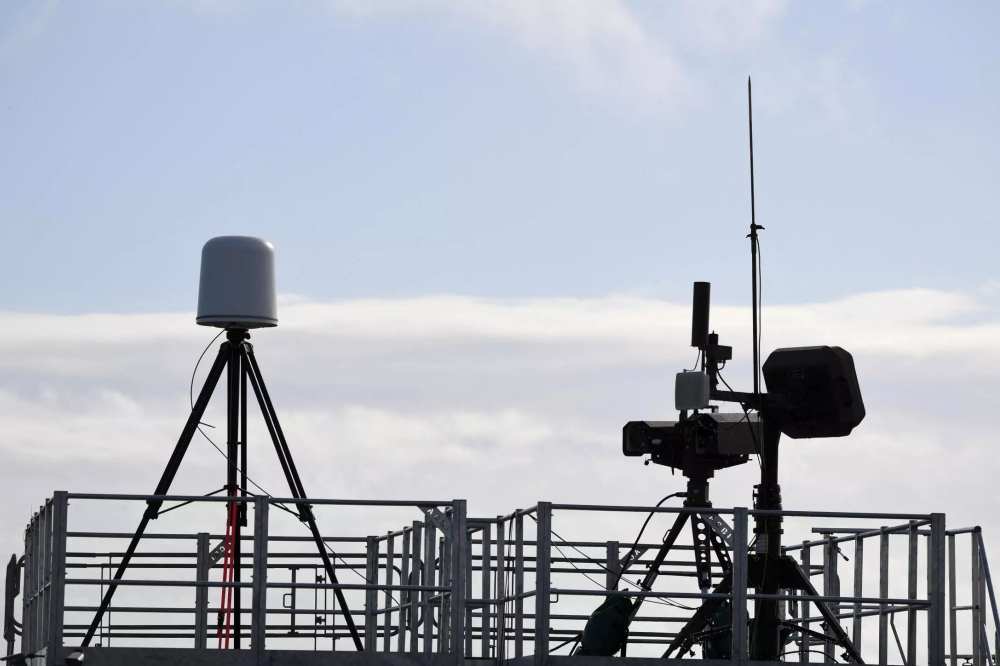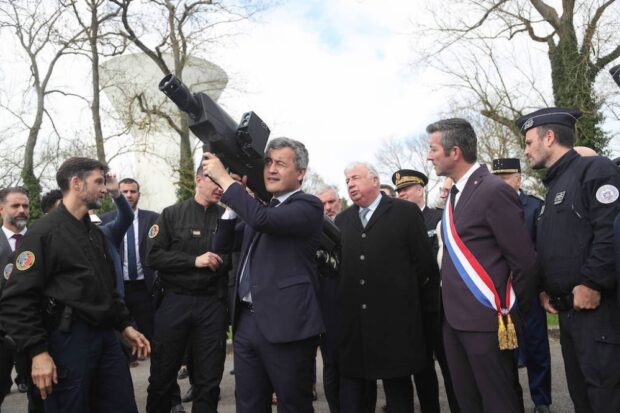With less than 100 days to go before Paris hosts the 2024 Olympics, which organisers plan to open with an elaborate waterborne ceremony on the Seine river, concerns are mounting about the efficiency of the anti-drone shield meant to protect the French capital from a potential terror attack. According to several security sources, recent tests have exposed some worrying flaws in the system.
The anti-drone system Parade has been especially developed to protect the Parisian skies throughout the July 26-September 8 Olympics and Paralympics. But various French media report that the system performed worse than expected during a March exercise.
“On two of the sites where Parade was tested, it didn’t work as well as expected. Put in other words, Parade stopped the drones, but within a much smaller perimeter than expected,”
an observer of the “Coubertin LAD 2” exercise told the French weekly Marianne.
Satirical newspaper Le Canard Enchaîné said the system had performed even worse than during the first exercise, “Coubertin LAD 1”, that was held to test its efficiency. During that exercise, Parade was reportedly only able to detect one out of three malicious drones at a distance of 800 metres.
“It’s annoying that this is coming out publicly but unfortunately, contrary to the official line, things aren’t really working as we’d like,”
a senior security source told AFP on condition of anonymity at the beginning of April.
Meant to Detect, Identify and Neutralise
The scenario of a swarm of explosive-laden drones sweeping in over the 300,000 spectators seated along the 6-kilometre stretch of the Seine during the July 26 opening ceremony would be nothing short of a nightmare for French police.
There are an estimated 3 million drones in France, many of them privately owned, and the police and the interior ministry are working hard to prevent any untimely flights over the capital.
“Drones represent a very high-level threat because they are easy to use, there are a huge number of them in France and converting them into weapons is simple and very affordable. It doesn’t require much logistical organisation,”
defence consultant Marc Chassillan said.
This is why French defence equipment groups Thales and CS Group, in consortium, won the French defence procurement agency’s (DGA) tender to develop an anti-drone system back in April 2022. The contract is worth €350 million over an 11-year period. In the consortium’s tender, Parade was presented as a “scalable, modular, multi-mission system” for fighting drones.
“Parade consists of a set of radars and cameras capable of detecting and characterising the threat. The system is complemented by a goniometer that detects radio transmissions guiding the drone,” Chassillan explained. “Then there are the countermeasures: jamming to immobilise or modify the trajectory [of the drone], or the intervention of a police drone equipped with a net to capture the malicious device,” he said.
The system can also shoot down drones directly, but this is a last resort because the debris generated by such an explosion could injure or even kill people on the ground.

French consortium Thales and CS group present one of the possible configurations of their Parade system in Bretigny near Paris on October 21, 2022. © Eric Piermont, AFP
Closed-Door Hearings
The latest results add to an already worrying series of setbacks for Parade. Initially scheduled for June 2023, the delivery of the six Parade systems has already been delayed several months. This prompted the French Senate Defence Committee to launch a fact-finding mission at the end of 2023.
The committee’s conservative chairman, Cédric Perrin, has since repeatedly criticised the system. And on March 20, the senators announced their report would not be made public. When Defence Minister Sébastien Lecornu concluded the fact-finding mission’s hearings on April 2, he did so behind closed doors, fuelling security concerns for the Games even more.
“The decision to not make the report public was taken in a collegial manner following the hearings,” Philippe Paul, also a conservative senator and co-author of the report, said. “But it’s true that the Parade system, which has been tested several times, has not performed completely satisfactorily. The defence ministry, the DGA and the air force are perfectly aware of this.”
Will Thales and CS Group be able to rectify the flaws in time for the Games? Some are not so sure. “The time to train the staff, to make significant improvements to the system, it seems impossible,” a security source told AFP in the beginning of April.
The Challenge of Fighting Drones in an Urban Setting
The French air force seems to be considering alternatives after buying several Bassalt anti-drone systems manufactured by Hologarde, a subsidiary of Paris international airport operator Groupe ADP.
“It’s important to understand that the Parade system is not the only equipment that will be used to fight drones during the Olympic Games. It is a part of a whole set-up involving different systems used by the interior ministry, the Paris airports, the Air Force and the gendarmerie,” Paul noted.
But despite these extra layers of security, the task of keeping the French capital free from drones, especially during the opening ceremony, will be huge for security forces.
“For an anti-drone radar, an urban environment is extremely difficult and requires signal processing. Trees, buildings and monuments make detection more difficult because they form obstacles that act as a screen and allow a drone to appear at the last moment,”
Chassillan said.
“The other big fear is a swarm of drones and their saturation effect. If 150 drones attack the crowd during the opening ceremony and one of them passes through, it’s enough to spoil the party. Especially as the Seine is like a canyon, with plenty of perpendicular streets that can act as access corridors for drones,” he said.
No Direct Threat
For the time being, the plan is to keep the opening ceremony on the Seine, which would be the first time in Olympic history it is hosted outside of a stadium setting.
“We can do it and we will do it,”
President Emmanuel Macron said in an April 15 interview with BFMTV. But for the first time, the French leader spoke of a plan B and a plan C for the ceremony should the security threat become too great.
One option could be to limit the ceremony to the area around the Trocadéro, across the river from the Eiffel Tower. Another alternative, he said, could be to move it to the national stadium, Stade de France.
Macron’s comments reflect a certain degree of nervousness surrounding the ceremony, whose spectator numbers have already been halved and will be subject to certain restrictions due to security concerns.
“There’s probably a bit of panic because the date [of the opening ceremony] is fast approaching. It’s going to come around quickly, but there’s still room for manoeuvre if we have to scale things back or put a plan B into place,”
Senator Paul said.
Earlier this week, however, Interior Minister Gérald Darmanin reassured journalists that “today, there is no real threat” to the Olympics. But although the Games might not be subject to a direct threat at the moment, the wars in Ukraine and Gaza and the heightening tensions between Israel and Iran mean they will unfold during a particularly sensitive global context.
The deadly terror attack on the Crocus City Hall in Moscow on April 22, which was claimed by the Islamic State (IS) group, also prompted France to momentarily raise its security alert to the highest level.
Top Photo: J.E.E/SIPA


